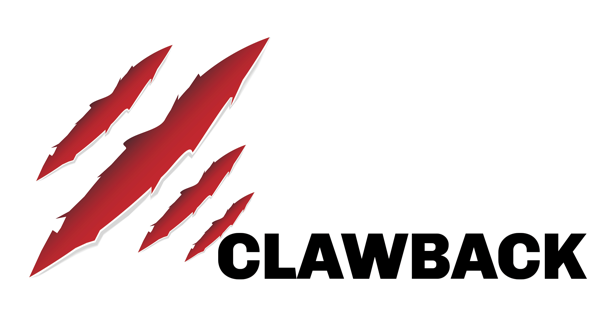I recently got interviewed over email by one of my mentees. I thought their questions were pretty interesting and worth sharing with the community. This session focused on ClawBack™ and was done for a college media class assignment. I hope you enjoy the interview as much as I did giving it.
Q: What is ClawBack?
ClawBack is a platform for helping organizations detect data leaks. It’s a cloud-based engine focused on three specific kinds of leaked data – source code, device and application configurations and credentials. It systematizes many of the manual efforts which mature organizations had been doing either partially, or in an ad hoc fashion, and makes them ongoing, dependable and available to organizations of any size and technical capability.
The engine lets the customer pick monitoring terms, and yes, we have a very nice guide available in the online help to guide them. Once the terms are chosen, the engine goes to work and begins to scour the sites most commonly associated with these types of leaks. At first, it does historical searches to catch the client up to the moment, and then, periodically, it provides ongoing searching for signs of leaked data.
Once a leaked dataset is found, the user is alerted and can view the findings in the web portal. They can take immediate action from the takedown advice we provide in online help, or they can choose to archive the alert or mark it as a false positive to be ignored in the future. Email alerts, team accounts and alert exports for SEIM/SOAR integration are also available to customers at the advanced levels.
Basically, ClawBack is a tool to help developers find code that accidentally slipped to the Internet, network admins and security teams find configurations and credentials that have escaped into the wild. We wanted to make this easy, and raise the maturity level of data leak detection for all organizations. We think we hit the mark with ClawBack, and we hope you do too.
Q: Why did your team create ClawBack and why now?
This is a great question! For many years now, we have been working a variety of security incidents that all tie back to attackers exploiting leaked data. They routinely comb the Internet looking in these common repositories and posting locations for code, configs and credentials. Once they find them, they are pretty quick to take advantage.
Take for example, a leaked device configuration from a router. The global paste bins, code repositories and forums are full of these kinds of leaks. In many cases, these leaked files contain not just the insights the attacker can gain from the configuration, but often, logins and passwords that they can use to compromise the device. Many also give up cryptographic secrets, network management credentials and other significantly dangerous information. The attackers just harvest it, use it and then spread into other parts of the network – stealing as they go.
At MSI, we just got tired of seeing organizations compromised the same way, over and over again. Time after time, the clients would say they had no idea the data had been exposed. Some had ad hoc processes they ran to search for them, and others had tools that just weren’t getting the job done. We knew we had to make something that could help everyone solve this problem and it had to be easy to use, flexible and affordable. Nothing like that was on the market, so we built it instead.
Q: How does ClawBack address the issues of leaked critical data?
As you read above, we wanted to focus on the things that hurt the most – leaked code, configs and credentials. These three types of leaks are at the core of more than 90% of the leak-related incidents we’ve worked over the last several years. We didn’t try to solve every problem with this new tool – or make it a swiss army knife. We focused only on those 3 kinds of leaks.
Today, ClawBack monitors the most common sites where these leaks often occur. It monitors many of the global pastebins associated with leaks, forums and support sites where folks often accidentally expose data while getting or giving help and work repositories where many of these items often end up from inadvertent user errors or via misconfigured tools.
ClawBack provides the dependable process and ongoing vigilance that the most mature firms have access to – and it brings that capability to everyone for less than a fancy cup of coffee a day.
Q: How is it different than DLP solutions?
For starters, there’s no hardware, software or agents to deploy and manage. The cloud-based platform is so simple to use that most customers are up and monitoring in less than 5 minutes. You simply register, select your subscription, input monitoring terms and ClawBack is off and running. It’s literally that easy!
Now, DLP is a great tool. When it’s properly configured and managed, it’s very capable. Most of our ClawBack clients have DLP solutions of some sort in place. The problem is, most of these data leaks occur in ways that render the DLP unable to assist. In most cases, the data leaks in the incidents we have worked have occurred outside of the corporate network that the DLP is monitoring. When we traced back the root of the incident, most of them came from workers who were not using the corporate network when they made their grave mistake.
Additionally, of those that did use the corporate network, often the DLP was either misconfigured, the alert was missed or the transaction was protected by cryptography that circumvented the DLP solution. A few of the incidents came from users who routinely handle code and configuration files, so the anomaly-based DLP tools assumed the leak was normal, usual traffic.
Sadly, the last group of incidents that had DLP in place went undetected, simply because the DLP solution was configured to meet some regulatory baseline like HIPAA, PCI or the like and was only searching for leaked PII that matched those specific kinds of patterns. In those cases, source code, configurations and even dumped credentials were far outside of the protection provided by the DLP.
ClawBack takes a different approach. It lets users know when this type of data turns up and lets them respond. It’s easy, plain language monitoring term management makes it trivial to define proper terms to tackle the 3 critical types of leaks. We provide a very detailed set of suggested terms for customers in our online help, which most folks master in moments.
Q: If an organization doesn’t have any in-house development or code, what can ClawBack do for them? Same question for organizations that outsource their device management – how can they get help from ClawBack?
Organizations that don’t do any development or have any source code are few and far between, but they still gain immense capability from ClawBack. Nearly every organization has device and application configurations and credentials that they need to monitor for exposure. Even if you outsource network management, you should still use ClawBack as a sanity check to watch for data leaks. We’ve seen significant numbers of leak-related security breaches from networks managed by third parties.
Requesting the key device configurations from your vendor and inputting identifying data into ClawBack is easy and makes sure that those configurations don’t end up somewhere they shouldn’t – causing you pain. Identifying unique account names and such, and using those as ClawBack monitoring terms can give you early warning when attackers dump credentials, hashes or other secrets that could cause you harm. Being able to change those passwords, kill accounts, increase monitoring and claw back those files through takedown efforts can mean the difference between a simple security incident and a complete data breach with full legal, regulatory and reputational impacts.
Q: Several people have said you are leaving money on the table with your pricing model – why is the pricing so affordable?
The main reason that the product costs under $200 per month at the highest level, currently, is that I wanted not-for-profit firms to be able to afford to protect themselves. Credit unions, charities, co-op utilities and the like have been huge supporters of MicroSolved for the last 30 years, and I wanted to build a solution that didn’t leave them out – simply because they have limited funds. Sure, we could charge larger fees and only target the Fortune 500 or the like, and make a lot of money doing it. The problem is, the security incidents we built this to help eliminate happen to small, mid-size and less than Fortune 500 companies too and there are a LOT MORE of those firms than 500. They need help, and they need to be able to afford the help they require.
Secondly, we were able to get to such an affordable price point by really focusing on the specific problem. We didn’t build a bunch of unneeded features or spend years coding capabilities to address other security problems. ClawBack detects leaks of critical data. That’s it. It provides basic alerting and reporting. We based the monitoring technology off our existing machine learning platform and re-used much of the know how we have developing past products and services like TigerTrax™ and SilentTiger™. What saves us money and resources, saves our clients money and resources.
Lastly, at MSI, we believe in making more value than we harvest. We want to provide significant levels of value to our clients that way over scales what they pay for it. We can do that using technology, our expertise and by building solutions that focus on significant problems that many feel are untenable. We’ve been doing it for almost 30 years now, so we must be getting something right…
Q: What’s next for ClawBack? Is there a road map?
We are talking about adding some forms of risk determination to the findings. We are currently in discussion with clients and experts about how best to do that and communicate it. We are discussing using some additional machine learning techniques that we developed for our social media monitoring and threat intelligence platforms. That’s the next step for us, that we can see.
We’re also looking at user feedback and curating what folks are asking about and thinking about when using the product. That feedback is being ranked and added to the road map as we create it. We’ve got some ideas of where we want to go with ClawBack, but honestly, the tool addresses the problem we built it to help with. That’s the core mission, and anything outside of that is likely to fall out of the mix.
Q: You have a history of designing interesting products – what is on the horizon or what are you playing with in the lab these days?
I wish I could tell you about the things we are playing with, because it is fascinating. We are exploring a lot of new capabilities in TigerTrax with different machine learning models and predictive techniques. We’re working on updates to HoneyPoint™ and SilentTiger that will bring some very cool new features to those capabilities.
We’re also continuing to gather, analyze and deliver specific types of threat intelligence and data analytics of hostile data sets. We’re studying adversarial use of machine learning techniques, attacks against different AI, IoT and cloud platforms and we’re diving deep into cyber-economics and other factors related to breaches. I’m also working on a pretty interesting project with some of my mentees, where we are studying the evolution, use and capability growth of various phishing kits in use today. The mentees are learning a lot and I’m getting to apply significant amounts of machine learning techniques to new data and in new ways that I haven’t explored before. All in all, pretty cool stuff!
I’ll let you know what we come up with. Thanks for interviewing me, and thanks to the readers for checking this out. Give me a shout out on Twitter – @lbhuston and let me know if you have questions or feedback on ClawBack. I’d love to hear your thoughts!


 ClawBack Is Purpose Built to Detect Info Leaks
ClawBack Is Purpose Built to Detect Info Leaks We’ve worked with our clients and partners to put together a world-class data leak detection platform that is so easy to use that most security teams have it up and running in less than five minutes. No hardware appliance or software agent to deploy, no console to manage and, best of all, affordable for organizations of any size.
We’ve worked with our clients and partners to put together a world-class data leak detection platform that is so easy to use that most security teams have it up and running in less than five minutes. No hardware appliance or software agent to deploy, no console to manage and, best of all, affordable for organizations of any size.